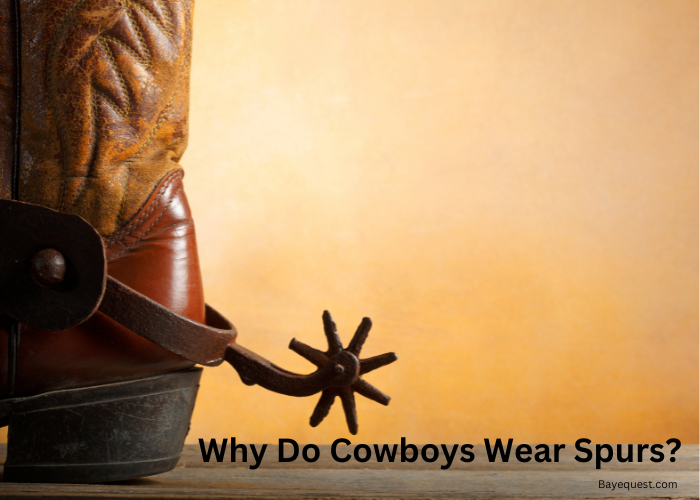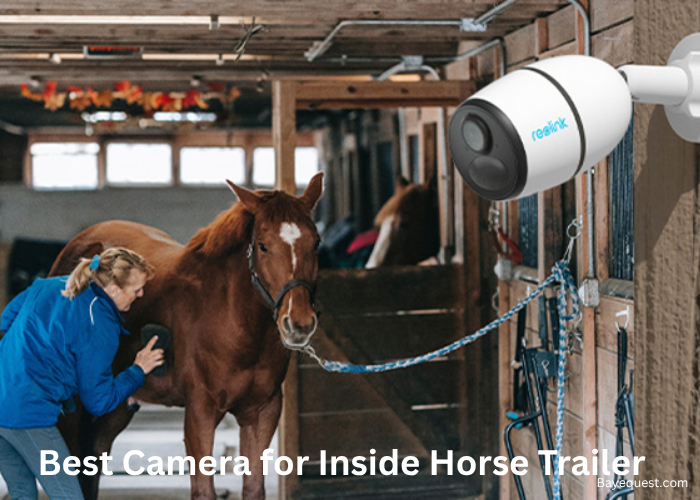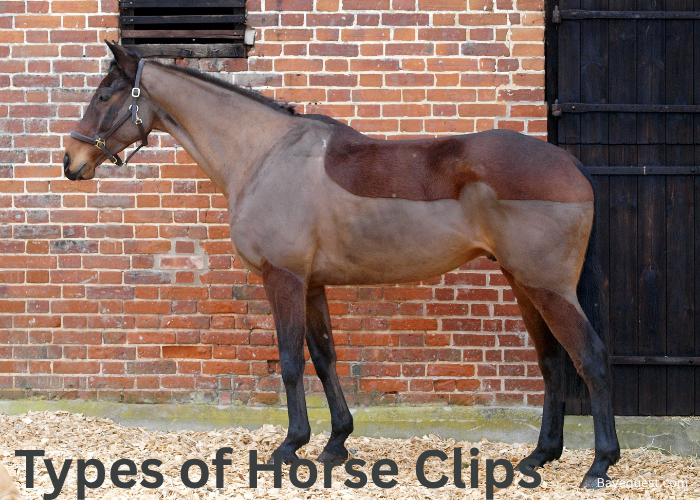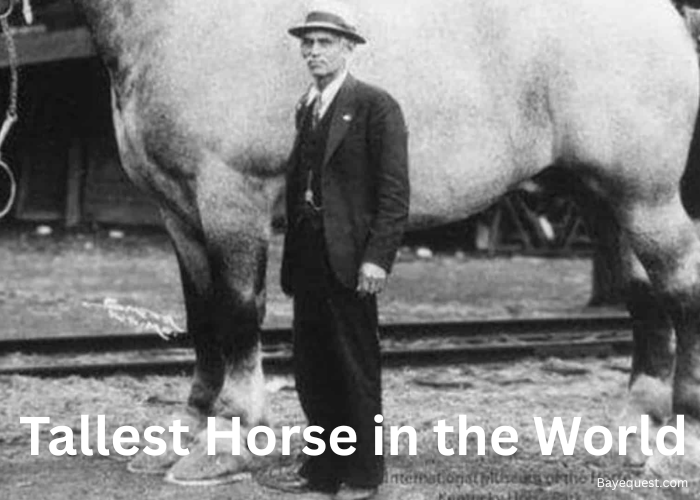Spurs are more than a cowboy’s jingle—they’re tools with purpose and history. While they might add a rugged touch, cowboys didn’t wear them just for looks.
Spurs were essential for guiding horses with precision and getting tough jobs done.
These iconic boot accessories have been a key part of cowboy life, blending function with a bit of flair. But what’s the real story behind them?
Let’s explore the purpose and significance of cowboy spurs.
Why Do Cowboys Wear Spurs? Key Takeaway
Cowboys wear spurs to guide their horses with precision. Spurs send signals to the horse, helping it move forward, turn, or stop. They’re a simple tool that makes communication between rider and horse clear and effective, especially during demanding tasks like herding cattle. Spurs are practical and essential in cowboy life.
The History of Spurs
Spurs have a long history. They date back to ancient times. The Romans used them, as did knights in medieval Europe.
Spurs were tools for guiding horses in battle. When the Spanish arrived in the Americas, they brought spurs with them.
Cowboys in the American West adopted these spurs. Over time, they became more than just a tool.
Cowboys needed spurs to control their horses. They used them to give precise commands. Spurs helped with tasks like herding cattle.
But spurs also became a symbol of status. Cowboys often wore decorated spurs, showing off their skill.
Today, spurs remain part of cowboy culture. They connect the modern cowboy to a rich history.
Read also: History of the Wild West Cowboys.
Practical Use of Spurs
Spurs are more than decoration. They have a practical purpose.
Cowboys use spurs to communicate with their horses. A gentle nudge from a spur can signal the horse to speed up, slow down, or turn.
This is especially important when herding cattle. A cowboy needs precise control to keep the herd together.
Spurs also help in tough situations. When a horse hesitates, a quick touch with the spurs can encourage it to move forward.
This is crucial on rough terrain or during long cattle drives. The spur acts as an extension of the cowboy’s leg. It helps in giving clear, direct commands without the need for reins.
But it’s not about force. Experienced cowboys use spurs with care. The goal is to guide the horse, not to hurt it.
Spurs are a tool, not a weapon. Proper use shows the cowboy’s skill and understanding of the horse.
In the end, spurs make the job easier and safer for both the cowboy and the horse. They are an essential part of a cowboy’s gear, designed for efficiency and control.
How Do Spurs on Cowboy Boots Work?
Spurs are simple, yet effective. They sit on the back of a cowboy’s boots, just above the heel.
When the cowboy needs to give a command, he presses his heel against the horse’s side. The spurs make contact, sending a signal to the horse. It’s like a tap on the shoulder, telling the horse what to do.
The design of the spurs is key. They have small, rotating wheels, called rowels, that roll when pressed.
This creates a gentle pressure, not a sharp jab. The horse feels this pressure and responds accordingly. It might speed up, turn, or stop, depending on the cowboy’s intent.
Spurs work because they enhance the cowboy’s ability to communicate. Instead of relying solely on reins or voice, the cowboy can use the spurs for more precise control.
The horse understands the signals because they are consistent and clear. Over time, the horse learns to respond quickly to the slightest touch.
So, in short, spurs work by giving the cowboy a better way to guide the horse, ensuring both can work together efficiently and safely.
How Did a Cowboy Earn His Spurs?
A cowboy earned his spurs through hard work, skill, and bravery. He had to prove himself on the ranch and in the saddle.
Tasks like herding cattle, breaking wild horses, and surviving the harsh wilderness tested his abilities.
Cowboys also needed to show loyalty and respect to their fellow workers. Riding through dangerous trails and facing threats like rustlers or predators required courage.
A cowboy’s spurs symbolized experience and honor. They were not given lightly but earned through consistent effort.
When a cowboy received his spurs, it showed he was trusted and respected as a skilled and dependable hand.
What Kinds of Riders Use Spurs?
Spurs are used by many types of riders, not just cowboys. Each rider has a specific purpose for using them.
Here’s a quick look at who uses spurs and why:
1. Cowboys
Cowboys are the most famous users of spurs. They use them to control horses during cattle drives, rodeos, and ranch work.
Spurs help them guide their horses with precision, especially in tough situations.
2. Rodeo riders
Rodeo riders, especially in events like bull riding and bronc riding, often wear spurs.
The spurs help them stay balanced and communicate with the horse or bull, even in the chaos of the arena.
See also: What to Wear to a Rodeo.
3. Dressage riders
In dressage, spurs are used for precise control. These riders use very light touches to guide their horses through intricate movements.
The spurs help in giving subtle commands without disturbing the horse’s rhythm.
4. Trail riders
Some trail riders use spurs, especially when navigating difficult terrain. Spurs can help a rider encourage the horse to move forward or handle obstacles more confidently.
5. Western riders
In Western disciplines, like reining and cutting, spurs are common. They assist in guiding the horse through quick turns and stops, helping to showcase the rider’s skill.
(Learn the difference between Western and English disciplines in our other guide)
Types of Cowboy Spurs
Cowboy spurs come in different types, each with its design and purpose. Here’s a breakdown of the main types:
Western Spurs
These are the classic type most people think of when they picture a cowboy. They’re built for versatility and durability.
This makes them suitable for a range of tasks, from everyday ranch work to participating in rodeos. The design of Western spurs strikes a balance between function and tradition.
They have a wide heel band and a rowel that’s just the right size for most riding activities.
Rodeo Spurs
These spurs are tailored to the demands of rodeo events. They often feature longer shanks and larger rowels compared to other types.
This design gives riders extra leverage and control. They come in handy during high-intensity moments like bull riding or bronc busting.
Rodeo spurs are built to help the rider stay balanced and maintain control, even when the ride gets wild.
Reining Spurs
Reining spurs are specialized for the precise, controlled movements required in reining competitions. These spurs have a shorter shank and a smaller, smoother rowel.
This design allows the rider to communicate subtle cues to the horse without overwhelming it. It is essential in a discipline where finesse and detail are key.
Parts of Cowboy Spurs
The parts of a cowboy spurs include:
Heel Band / Yoke / Branch
The heel band, also known as the yoke or branch, is the U-shaped metal piece that wraps around the back of the cowboy’s boot heel.
It’s the main body of the spur and provides the foundation for all the other components.
Cowboys rely on the heel band to attach the spur to their boot, ensuring that it stays in place during riding.
The snug fit around the heel allows the cowboy to apply consistent pressure when needed.
Spur strap / Spur chain
The spur strap or spur chain is what holds the spurs onto the cowboy’s boots.
The strap goes over the foot, securing the heel band in place, while some designs include a chain that loops under the boot’s arch for extra stability.
Cowboys use the spur strap or chain to adjust the fit, ensuring that the spur doesn’t slip off during work or riding.
It’s essential for comfort and functionality, making sure the spur remains effective throughout the day.
Chap guard
The chap guard is a small piece of metal or leather attached to the shank of the spur. It’s designed to protect the cowboy’s chaps from being torn or damaged by the rowel or shank.
Cowboys wear chaps to protect their legs from brush and thorns. The chap guard ensures that the spurs don’t inadvertently ruin this protective gear.
Rowel
The rowel is the small, rotating wheel at the end of the shank, often with pointed edges. This is the part of the spur that makes contact with the horse.
When a cowboy presses their heel against the horse’s side, the rowel rolls and creates a sensation that prompts the horse to respond.
The size and sharpness of the rowel can vary depending on the cowboy’s needs. However, it’s always used to communicate commands to the horse gently and effectively.
Rowel pin cover
The rowel pin cover is a small piece that holds the rowel in place on the shank. It allows the rowel to rotate freely while keeping it securely attached to the spur.
Cowboys depend on the rowel pin cover to ensure that the rowel functions properly. It maintains smooth rotation and prevents it from coming loose during use.
Button
The button is a small, usually round metal piece located on either side of the heel band. It’s where the spur strap attaches, keeping the spur securely on the cowboy’s boot.
Cowboys use the button to adjust and fasten the spur strap, ensuring a snug fit that won’t shift while riding. It’s a simple yet crucial part of the spur’s overall design.
Swing arm
The swing arm is a movable part of the spur that connects the shank to the heel band. It allows the shank and rowel to move slightly as the cowboy’s foot moves, providing more flexibility and comfort.
Cowboys benefit from the swing arm because it lets them apply the spur’s pressure more naturally.
Shank
The shank is the straight or curved piece of metal that extends from the heel band and holds the rowel. It’s the part that reaches down towards the horse’s side when the cowboy’s foot is in position.
Cowboys use the shank to deliver precise cues to the horse by adjusting the angle and pressure applied with the rowel.
The length and curve of the shank can vary depending on the specific needs of the rider, with longer shanks providing more leverage.
How to Wear Cowboy Spurs
Wearing cowboy spurs is simple, but it takes a bit of know-how to get it right. Here’s how to do it:
First, start by sliding the heel band over the back of your boot. The U-shaped band should fit snugly around your heel, resting just above the boot sole.
Make sure the rowel, that small wheel at the end of the shank, is facing down towards the ground.
Next, grab the spur strap. Thread it through the buttons on either side of the spur.
The strap goes over the top of your boot, securing the spur in place. Adjust the strap so it’s tight enough to keep the spur from moving, but not so tight that it’s uncomfortable.
Some spurs also have a chain that loops under the arch of your boot. If yours do, fasten the chain for extra stability. This helps keep the spur in place, especially when you’re on the move.
Finally, check that the rowel spins freely. You want it to roll easily when you press your heel, but not be too loose. With everything in place, you’re ready to ride.
Remember, spurs are a tool, not just decoration. Wear them with purpose, and use them with care.
Related read: How Should Cowboy Boots Fit?
Which Spurs Should You Buy?
Choosing the right spurs depends on what you need them for and your level of experience. Here’s a quick guide to help you decide:
If you’re a beginner or just starting out with horseback riding, simple Western spurs are a good choice. They’re versatile, easy to use, and work well for general riding or casual trail rides.
Look for spurs with a shorter shank and a gentle rowel, which will give you control without overwhelming your horse.
If you are into rodeo or more intense riding, like bull or bronc riding, you’ll want rodeo spurs.
These have longer shanks and larger rowels, giving you the leverage and precision needed during high-energy events. They’re designed to keep you balanced and in control, even when things get rough.
If your focus is on precision and finesse, such as in reining or dressage, go for spurs with a shorter shank and a smaller, smooth rowel.
These spurs are all about subtlety, allowing you to give fine-tuned cues without being too harsh. They’re perfect for advanced riders who need to guide their horse through intricate maneuvers.
Finally, make sure the spurs you buy fit your boots well and are comfortable. The right pair should feel secure but not restrictive.
Test them out to ensure the rowel spins smoothly and the straps hold firm. Your choice should match your riding style and level of expertise.
Interesting read: What Should I Wear Horseback Riding?
Do Spurs on Boots Hurt Horses?
Spurs, when used correctly, do not hurt horses. They are a tool for communication, not a weapon. The key is in how they’re used.
Spurs are designed to give gentle cues to the horse. When a cowboy or rider presses the spurs against the horse’s side, the pressure is meant to be subtle, not painful.
The rowel, which is the small wheel at the end of the spur, is rounded and smooth.
It rolls along the horse’s skin, creating a sensation that the horse recognizes as a signal to move or change direction.
Experienced riders use spurs with a light touch. They understand that the goal is to guide the horse, not to cause discomfort.
A well-trained horse responds to even the slightest nudge, so there’s no need for harshness.
Spurs can help improve the connection between rider and horse, allowing for more precise control and communication.
However, improper use of spurs—such as pressing too hard or using spurs that are too sharp—can cause pain or injury. That’s why riders must be trained in the correct use of spurs.
When used with care and respect, spurs are a safe and effective tool in horsemanship.
Can Spurs be Used on Any Cowboy Boot?
Not every cowboy boot is made for spurs. While many are, some just aren’t designed to handle them properly. Here’s what you need to know.
First, check the heel. Spurs need a sturdy, pronounced heel to sit on. If your boots have a low or sloping heel, the spurs might not stay in place.
The heel should be firm and solid, giving the spur band something to grip onto securely.
Next, look at the back of the boot. Boots with a smooth, slightly raised back are ideal.
This design helps keep the spurs from slipping or digging into the leather. If your boots have a straight or flat back, you might find the spurs don’t fit as well or might slide around.
Also, consider the fit of your boots. Spurs need to sit snugly without shifting.
If your boots are loose around the ankle or heel, the spurs might not feel secure. A good fit ensures that the spurs stay in place and work as they should.
Finally, remember that spurs come with straps or chains that wrap around the boot. Make sure there’s enough space for these without them rubbing or causing discomfort.
So, while many cowboy boots can handle spurs, it’s important to check the design and fit to make sure they’re compatible.
What’s the Correct Way to Use Cowboy Boots With Spurs?
Using cowboy boots with spurs requires a bit of know-how to ensure you’re doing it right. Here’s how to get it done properly.
First, make sure your spurs are securely attached to your boots. Slide the heel band over the back of your boot, right above the heel. The spurs should fit snugly without slipping around.
Once the band is in place, fasten the spur strap or chain over the top of your boot. This strap keeps everything secure, so adjust it until the spur feels firm but comfortable.
When you’re riding, remember that spurs are for gentle communication, not force. To use them, press your heel lightly against the horse’s side.
The rowel, which is the small wheel on the spur, will roll and give a subtle signal to the horse. This could be a cue to speed up, slow down, or change direction.
The key is a light touch. You don’t need to jab or dig in. A small, controlled movement is enough.
With practice, you’ll learn how much pressure is just right. Over time, both you and your horse will get used to these cues, making your rides smoother and more enjoyable.
Lastly, always check your spurs before and after each ride to ensure they’re secure and in good condition.
Proper use of spurs with your cowboy boots enhances your riding experience and strengthens the connection with your horse.
Read also: Can You Reshape a Cowboy Straw Hat?
What are Boot Spurs for? Conclusion
Cowboys wear spurs not just for style, but for purpose. Those jingling metal wheels are a link between rider and horse, a tool that speaks when words won’t do.
From guiding a horse through rugged terrain to signaling in a rodeo, spurs are a cowboy’s silent partner. They carry history, tradition, and a touch of grit—all wrapped around a boot heel.
So, the next time you see those spurs shining, remember, they’re more than just decoration—they’re a symbol of the cowboy way.








